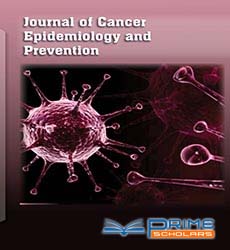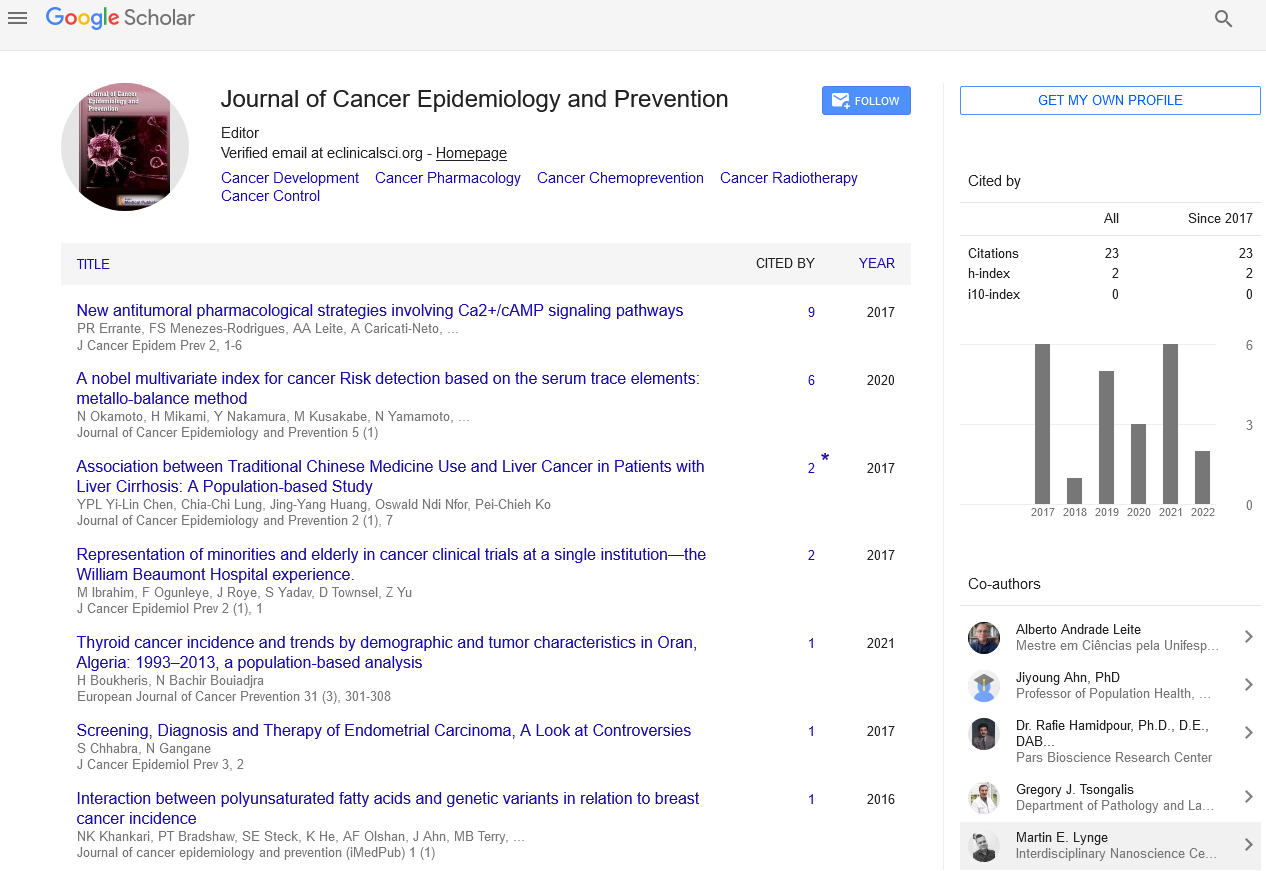Editorial - (2021) Volume 6, Issue 6
Hereditary Qualities and Causes of Cancer
Nikhil K Khankari*
Department of Epidemiology, University of North Carolina, Chapel Hill, NC 27599, USA
*Correspondence:
Nikhil K Khankari, Department of Epidemiology,
University of North Carolina, Chapel Hill, NC 27599,
USA,
Email:
Received: 03-Dec-2021
Published:
24-Dec-2021
Editorial Note
Cancer is a disease caused by uncontrolled cell growth and tumour growth due to genetic changes. DNA damage and genomic instability are the primary causes of sporadic (nonfamilial) malignancies. Acquired hereditary transformations cause a little level of malignancies. The majority of cancers are caused by environmental, lifestyle, or behavioural factors. Human cancer is generally not spread, though oncoviruses and cancer germs can cause it. The expression "natural," as utilized by malignant growth specialists, alludes to all that associates with people outside of the body. The area encompasses not only the biophysical environment (e.g., exposure to chemicals or sunlight), but also lifestyle and psychological factors).
Over a third of cancer deaths worldwide (and nearly 75-80% in the United States) may be avoided if recognized risks were reduced. Exposure to various chemical and physical agents (tobacco use accounts for 25-30%of cancer fatalities) and also environmental toxins, diet and obesity (30-35%), infections (15-20%), and radiation are all common environmental variables that lead to cancer death (both ionizing and non-ionizing, up to 10%). These factors work by affecting the function of genes within cells, at least in part. Before cancer may emerge, multiple such genetic alterations are usually required. When assessing the risk factors for the development of specific cancers, aging has been regularly and consistently acknowledged as a significant element to consider. Several molecular and cellular changes essential in cancer development accumulate as people age, eventually manifesting as cancer.
Hereditary Qualities
Despite the fact that there are over 50 hereditary cancers, only about 0.3% of the population has a cancer-related genetic mutation, and these mutations account for just 3-10% of all cancer cases. The great majority of malignancies are not passed down through the generations ("sporadic cancers"). An inherited genetic flaw is the primary cause of hereditary malignancies. A cancer syndrome, also known as a family cancer syndrome, is a hereditary condition in which inherited genetic abnormalities in one or more genes predispose afflicted persons to cancer development and may potentially cause cancer to develop early in life. The risk of cancer is elevated in cancer syndromes, however the risk varies. Cancer is not the major symptom of some of these disorders, and it is a rare side effect. Tobacco is responsible for one out of every three malignant growths that occur in the created world, and one out of every five worldwide. In the United States, cellular breakdown in the lungs and then mortality rates have been reflected by smoking,with increases in smoking being followed by internal increases in cellular which are breakdown in the lungs leads to increase in death rates and more recently, the decreases in smoking rates that's because the early years is been accompanied by decreases in cellular breakdown in the lungs death rates in men. However, the overall number of smokers are increasing, and some organization have termed it as the tobacco pandemic.
Until World War II, when medical research facilities identified major international disparities in illness incidence, cancer patient treatment and studies were limited to individual physicians' practises. This realisation prompted national public health organisations to allow for the collection of health data from clinics and hospitals, a technique that is now used in many nations. The bone marrow of victims of the Hiroshima and Nagasaki atomic explosions was completely destroyed, according to the Japanese medical profession. They came to the conclusion that defective bone marrow might also be destroyed by radiation, which led to the creation of leukaemia bone marrow transplants. Since World War II, the pattern in disease treatment has been to further develop flow treatment systems on a miniature level, normalize them, and globalize them to track down fixes through the study of disease transmission and worldwide joint efforts.
An arrangement for the conclusion and therapy of disease is a vital part of any general malignant growth control plan. Its fundamental objective is to fix malignant growth patients or draw out their life impressively, guaranteeing a decent personal satisfaction.
Citation: Khankari NK (2021) Hereditary Qualities and Causes of Cancer. J Cancer Epidemiol Prev. Vol.6 No.6:e006.
Copyright: This is an open access article distributed under the terms of the Creative Commons Attribution License, which permits unrestricted use, distribution, and reproduction in any medium, provided the original work is properly cited.

